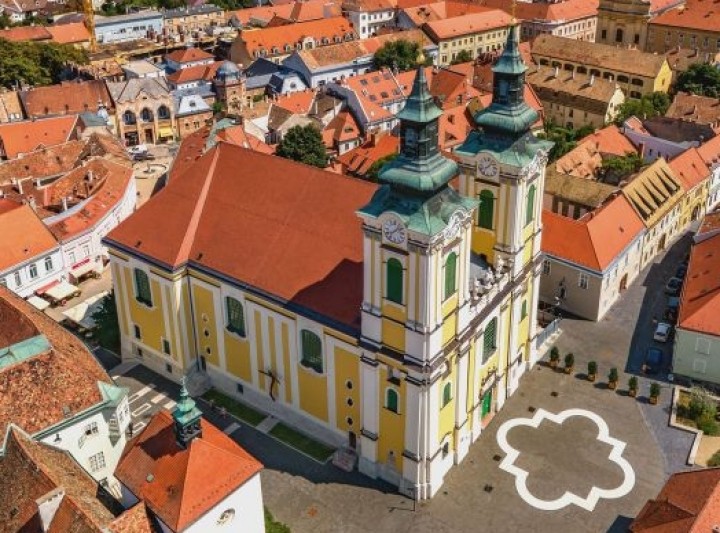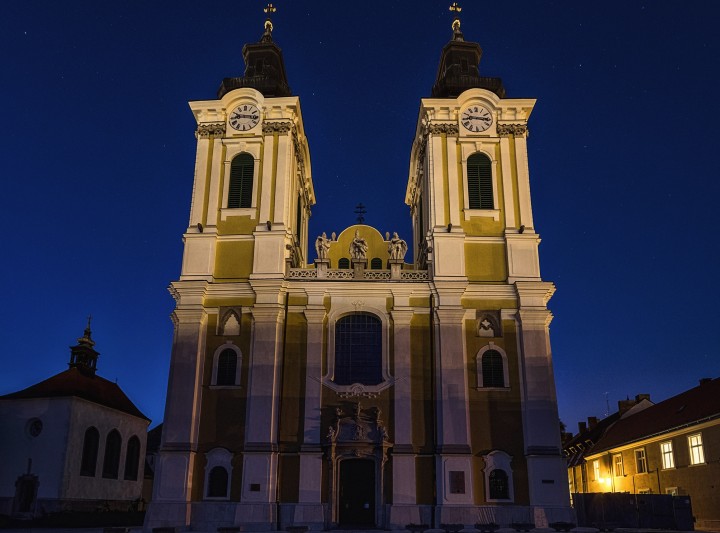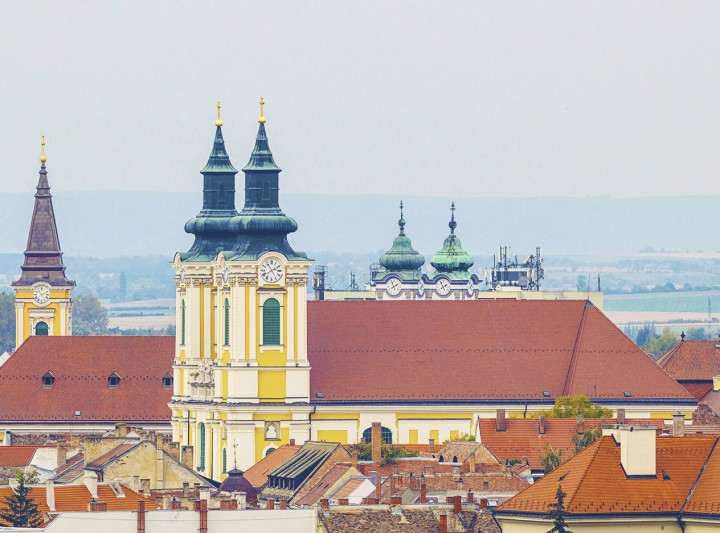
St. Stephen Basilica
The hill of the Basilica was the historic core of the city as it was the first residence of the sovereign, the spot where the palace of Great Prince Géza stood. Those who visit the crypt can also see the stone sarcophagus of Béla III and Ann of Antioch with the imprint of the body of the royal couple.
The hill of the Basilica was the historic core of the city as it was the first residence of the sovereign, the spot where the palace of Great Prince Géza stood. The Basilica was partly built on public donation on the foundations of the medieval gothic St. Peter and St. Paul Basilica between 1758 and 1768 according to the plans of Martin Grabner. A great support was also given for the building by Queen Maria Theresa. The church which was consecrated to the honour of King St. Stephen and which operated as a parish church prior to this was promoted to the rank of a basilica in 1777 at the founding of the Székesfehérvár Diocese. Its steeples were raised between 1805 and 1815 but the gothic windows proving the medieval origin of the building at the centre of the steeples were only uncovered during the restorations between 1936 and 1937.
In the crypt we can see the sarcophagus of Béla III and his wife. Above the scheme-arch frame of the gate opening on the main façade we can see the coat of arms of the city, puttos and stone vases. Above the ledge the terrace between the steeples are closed by stone bars and on three of these pedestals we find the statue of St. Stephen, St. Ladislaus and St. Emeric.
The inside walls of the church are decorated by the frescos of Johann Cymbal depicting the life of St. Stephen. The main altar-piece, depicting St. Stephen as he dedicates the Holy Crown representing the country into the protection of the Great Lady of Hungary was created by Vincenz Fischer. The richly applied red marble creates a solemn atmosphere. The altar segmented by Corinthian columns designed by Franz Anton Hillebrandt master architect of the court is especially nice. The stations of the Calvary were made by Barna Búza, a sculptor in the 1950s.
| Address: | 8000 Székesfehérvár, Arany János street 9. |
| Phone: | +36 22 315 114 |

















3000px.png)









